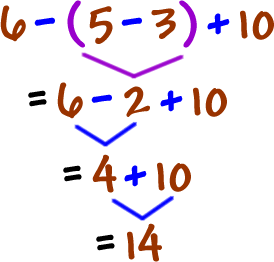Solving One Variable Equations:
"Linear equations are equations with a plain old variable like "x" rather than something more complicated like "x^2"
You've probably already solved linear equations; you just didn't know it.
When solving a one variable equation, you need to "undo" whatever has been done to the variable.
A solution: a solution to an equation is a value or set of values that makes the equation true.
For Example in the Equation:
x + 2 = 3
the solution is x = 1, because 1 + 2 = 3.
Lets Review: Additive Inverse:
An additive number is something you add to a number to make it equal 0.
2 + (-2) = 0
5 + -5 = 0
Multiplicative Inverse:
A multiplicative inverse is something you multiple by another number to equal 1.
2 X 1/2 = 1
You do this in order to get the variable by itself; in technical terms you are "isolating the variable."
For Example: x + 6 = -3
You first want to get the x on the left side by itself. So you will subtract the 6 to the right side. So now the equation looks like x = -3 - 6. So now we solve for x. -3 - 6 = -9. So x = -9.
Whatever you do to an equation,
do the S A M E thing
to B O T H sides of that equation!
do the S A M E thing
to B O T H sides of that equation!
Example: x - 3 = -5
Since you want to get x by itself, so you want to add 3 to both sides.
x - 3 = -5
+3 = +3
x = -2
Then the solution is x = -2.
Lets solve this equation: 3x + 6 + 4x = 13
First we need to combine like terms: those terms are the 3x + 4x = 7x.
So now the equation look like this: 7x + 6 = 13
So now to get the variable by itself we need to subtract the 6 from both sides.
So we get 7x = 13 - 6
7x = 7
now we divide by 7 to get x by itself to both sides.
So x = 1.
Now we need to check our work
3 (1) + 6 + 4 (1) = 13
3 + 6 + 4 = 13
13 = 13.
Therefore the solution is x = 1.
Lets solve this equation: 3 - 5x = 18.
First we need to move the 3 to the other side to get x by itself, so lets subtract the 3 from both sides.
-5x = 18 - 3
-5x = 15.
Now we need to divide by the -5 to get x by itself.
x = 15 / -5
x = -3.
Now we need to check our work so we plug x = -3 back into the equation.
3 - 5(-3) = 18
3 - (-15) = 18
18 = 18.
Therefore the solution is x = -3.







